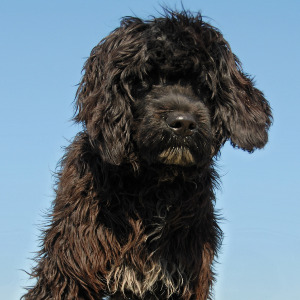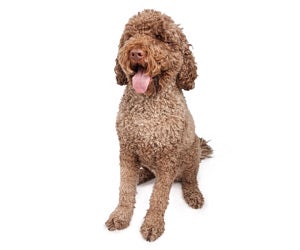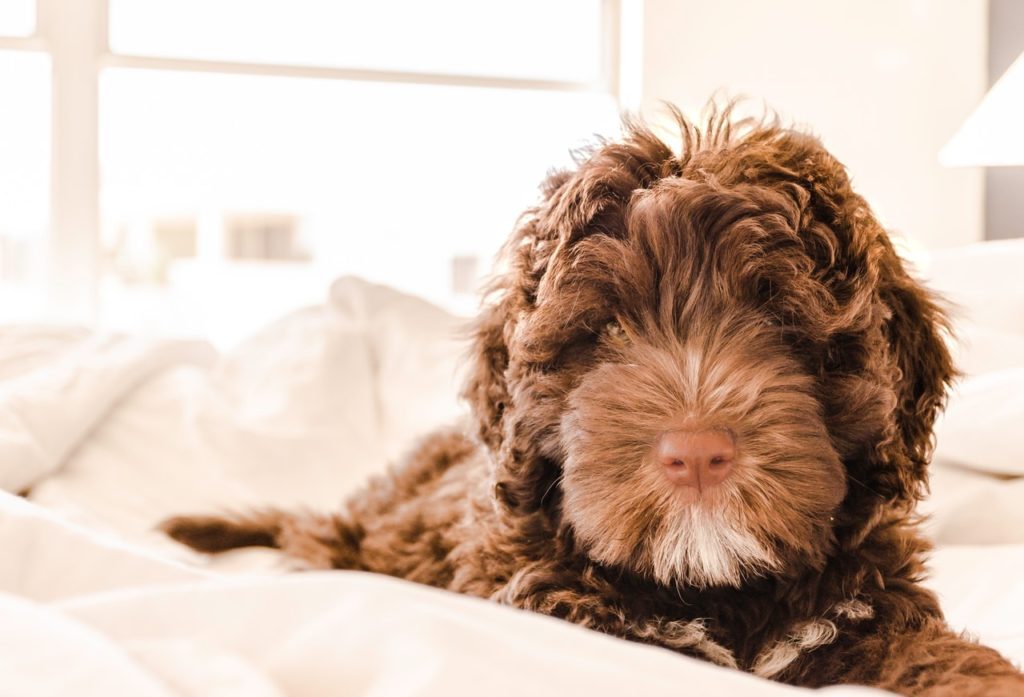The Portuguese Water Dog (PWD) is an energetic and intelligent dog breed with a curly coat well-suited for life around the water. Originally bred to herd fish and retrieve lost tackle and nets, the PWD is now an affectionate family companion and active working dog. This article provides a comprehensive overview of the Portuguese Water Dog breed.
History of the Portuguese Water Dog

Portuguese Water Dogs have a long history as rugged seafaring dogs along the coast of Portugal. Some key points about the origins and history of the breed include:
- Ancient breed dating back to the 14th century – Used by Portuguese fishermen to coral and retrieve fish, deliver messages between boats, and guard the catch. Their strong swimming skills and water-resistant coats suited them perfectly to life on the water.
- Nearly driven to extinction – By the 1930s, modern fishing techniques nearly made the PWD obsolete. Only a few breeders kept the lineage alive, most prominently Vasco Bensuade who helped revive interest in the breed.
- Rediscovered in the 1950s – Wealthy Portuguese businessman Antonio Cabral brought the breed to the attention of the Portuguese Kennel Club and began working to preserve the PWD. The breed gained fame after being featured in a 1958 article in Argosy magazine titled “Dogs for Rough Water Work.”
- Recognized by major kennel clubs – The Portuguese Water Dog Club of America was founded in 1972 and the breed gained AKC recognition in 1983. The breed gained further prominence when U.S. Senator Ted Kennedy started keeping PWDs as pets in the 1980s.
Physical Characteristics

The Portuguese Water Dog is a medium-sized, athletic breed with many traits well-suited for swimming and water retrieval:
- Size – Males stand 20-23 inches; females 17-21 inches. Height ranges between 17-23 inches tall at the shoulder. Weight ranges between 35-60 pounds.
- Coat – A thick, curly coat that is waterproof and hypoallergenic. Hair grow in tight, dense, ringlet curls. Common coat colors include black, white, brown, and combinations of black or brown with white. The texture helps regulate body temperature while swimming in cold waters.
- Body – A muscular, well-proportioned build. Broad chest and well-sprung ribs. Legs relatively short compared to body length. The body is strong and rugged enough for all day swimming, but compact enough for agility.
- Feet Tail – Webbed feet provides maximum surface area for swimming. Otter-like tail thick at the base and tapers toward the tip to aid steering and propulsion in water. The tail is typically carried above the level of the back when standing.
- Head Eyes – Domed skull with defined stop and slightly longer than muzzle. Medium-sized eyes are very expressive, ranging in color from brown, hazel and shades in between.
Temperament
The PWD is an affectionate and eager-to-please family dog with some unique personality traits:
Intelligent and Trainable
Extremely intelligent, the PWD often understands what is being asked of them. They pick up on cues quickly and usually respond well to reward-based training methods. Their working background makes them highly trainable dogs. With an experienced owner, the PWD excels at various dog sports and activities.
Active and Energetic
This high-energy breed requires a lot of daily exercise and mental stimulation. Without enough activity, they may become frustrated or destructive. The PWD needs space to run around freely and interactive playtime. They excel at canine sports like agility, dock diving, and obedience competitions.
Affectionate Loyal Companions
PWD form close bonds with family members and aim to please their owners. They shower affection on their favorite people. This loyal shadow dog will follow you from room to room and snuggle up close whenever possible. Proper socialization is important for this breed or they may become overprotective.
Wary of Strangers
The PWD tends to be reserved around strangers. Early socialization can help them discern normal behavior. They remain vigilant and will use their loud bark to alert their owner to anything unusual.
Adaptable to Various Living Situations
Despite their working pedigree, PWDs adapt very well to different home environments. Their moderate energy level and size allows them to adjust to everything from small city apartments to homes with large yards. Their non-shedding coat makes the breed a great choice even for those with allergies.
Grooming Needs

While PWDs do not shed, their curled coats requires regular brushing, combing and trimming:
- Brushing – Thorough brushing once a week removes mats or tangles. Daily brushing when the coat is blowing to remove dead hair.
- Combing – Use a stainless steel comb to help redistribute skin oils through the waterproof coat. Comb against the direction of hair growth.
- Trimming– PWDs require regular haircuts, usually every 6-8 weeks. The coat is typically trimmed to 1-2 inches in length for easier maintenance. Proper trimming accentuates the square profile of the breed.
- Bathing – Bathe every 2-3 months or when dirty using a mild dog shampoo. Rinse thoroughly as soap residue can cause skin irritation. Air dry or use a blow dryer on low heat setting.
- Overgrown coat, mats and improper drying can cause painful skin infections for the breed. Learn to properly care for their unique coat.
Health

Portuguese Water Dogs are generally healthy, but like all breeds they are prone to certain health conditions. Reputable breeders will screen breeding dogs for these issues:
Hip Dysplasia
An abnormal formation of the hip socket that leads to osteoarthritis. Can cause limping and difficulty standing up. Affected dogs should not be bred.
GM1 Storage Disease
A rare nervous system condition that appears between 3 months and 2 years old. Signs include tremors, difficulty walking, paralysis and seizures. A genetic test can identify carriers.
Progressive Retinal Atrophy (PRA)
An inherited, degenerative eye disorder that causes blindness over time. DNA testing can help identify dogs genetic prone to PRA.
With good care, regular vet checkups, proper diet, and exercise, the typical lifespan is 10 to 14 years. There are also certain cancers they may be prone to, so routine wellness checks are recommended.
Finding a Responsible Breeder
A responsible PWD breeder will aim produce healthy, good tempered dogs over profit. Here’s what to look for in an ethical, conscientious breeder:
Health Testing and Genetic Screening
Reputable breeders have all puppy parents tested and screened for inherited diseases common in the breed. These test results should be provided.
Questions Prospective Owners
An ethical breeder will ask questions to ensure their PWD puppy goes to a suitable forever home able to properly care for them.
Carefully Selected Pairings
Breeders should know the strengths and weaknesses in their dogs. They thoughtfully select pairings that aim to better the breed.
Promotes PWD Rescue Groups
Responsible breeders encourage adopting retired show dogs or rescue dogs before purchasing a puppy when appropriate. Supporting breed-specific PWD rescue groups.
When researching breeders, be wary those who seem focused primarily on making money or offer multiple designer breeds. Find a breeder actively involved in activities with their dogs. Reach out to local PWD clubs for breeder referrals.
Video
Conclusion
For experienced dog owners seeking an affectionate, energetic companion with special devotion to family, the PWD makes an excellent choice. They require plenty of exercise and regular grooming. With a history spanning many centuries, the Portuguese Water Dog’s future seems secured by dedicated fanciers and breeders around the globe enamored with this intelligent water-loving dog.